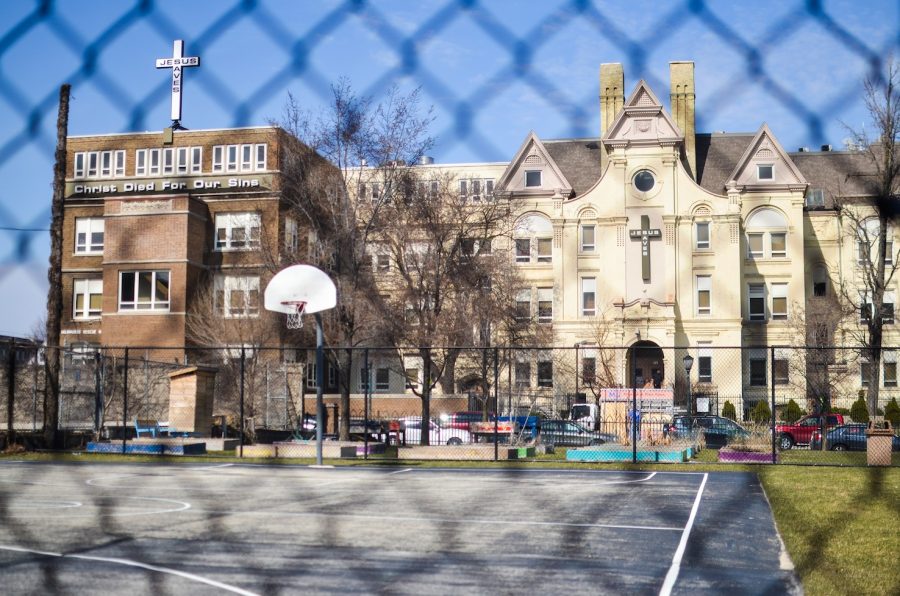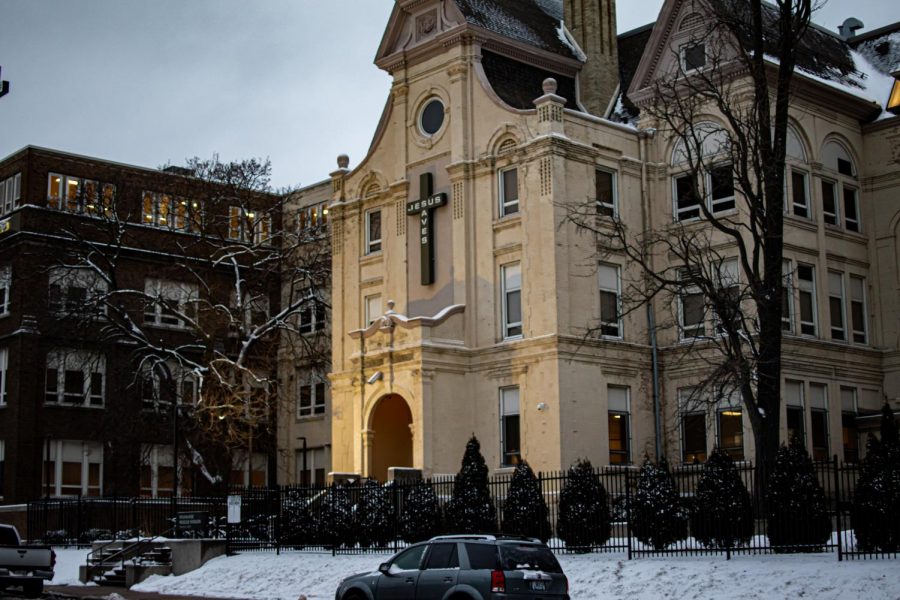There is an old, simple basketball court next to O’Donnell Hall. Much like the residence hall itself, the court is basic. But what it lacks in flair, it makes up for in character.
The hoops have nylon nets that are one size too small for the ball to pass through, which means that every time you make a basket, you have to swat the ball to get it back out. Fences surround the entire court with barbed wire on the left side, giving it sort of a prison-yard aesthetic.
At this court, two worlds collide. The students in O’Donnell Hall and the residents at the Milwaukee Rescue Mission are separated by just a crosswalk, but the lives they lead are vastly different.
“It’s crazy to think how different these two buildings are,” said O’Donnell resident Mathieu Stafford, a freshman in the College of Arts & Sciences. “When you mix the two groups, you might think there would be a turmoil-type thing, but we’ve intermingled and we get along really well.”
Differences are set aside on the court. The only divisions you will find among the players are the teams that captains pick.
My friends and I met “Coach,” from the Milwaukee Rescue Mission, in September when the weather was crisp and perfect to play. Coach’s first name is Earl, but he prefers not to share his last name. We initially started calling him Coach because he coached several basketball teams throughout his life. It was something we could tell when we played with him.
“He was about 60, although for his age he sure out-shot anybody out there,” said O’Donnell resident Sean Roberts, a freshman in the College of Engineering. “He was one of the best players, and he was giving pointers the whole time. He was never really cocky about anything, but he had that coach mentality where we’re all just having fun. He was having a good time.”
When Coach takes the court, he dribbles at the top of the key, licks his palms and stares down the defense. He is figuring out how he is going to score.
“It makes me feel young again to play with younger people,” Coach said.
He plays the game in an unselfish way. Rather than scoring every play, Coach makes it a point to pass it to his teammates more often than he shoots. A great example of Coach’s desire for inclusion occurred when a group of younger kids came and Coach insisted we draft them to teams.
Coach’s desire for inclusion meshes well with O’Donnell’s sense of community.
“Everyone’s door is always open,” said O’Donnell resident Nik Lange, a freshman in the College of Arts & Sciences. “It’s because of this tight-knit community that we’ve been able to branch out and hang around with the guys from across the street.”
We have played with many different residents of the Rescue Mission, but Coach is the one constant. He usually brings great defenders or gifted shooters with him.
“It’s a light atmosphere where we just get to talk to these guys,” Roberts said. “You’re not just going to walk over to the Rescue Mission and start talking to people. The average person doesn’t do that. When you bring a basketball court into that, you talk lightly about things, you bond over basketball and you realize there’s a lot of people out there that you really don’t know their story at all.”
Coach often tells us about his life, including his job in Kenosha that he commutes to via bus. Roberts, Lange and Stafford all agree that one of the most valuable parts about being able to talk to these people is benefiting from their knowledge and experience. Coach is kind of the bridge between the two worlds, and he is always willing to impart his wisdom.
“You know, man, I wish I was your age again,” Coach said. “You guys might not realize now how good you have it. If I could be your guys’ age again … jeez.”





